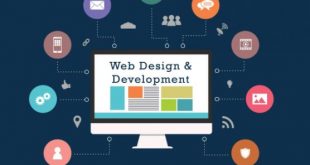Why human resources (HR) software?
HR management software is a hot topic right now. The concept of using technology to digitize some of the core HR business has been around for a few decades. More recently, organizations have really started to benefit from an increasing choice of software in the market. Many of these programs offer customizable and flexible solutions for all requirements and budgets.
What is HR software?
HR software is a digital platform that enables companies to manage key tasks and processes related to employee management. He supports the team in carrying out these activities, adding automation to otherwise time-consuming and laborious processes. Typically, these processes involve a lot of paperwork and manual record keeping.
Purpose of using HR software
HR software helps automate HR processes that are otherwise performed manually, which means they can be performed faster, accurately and consistently. Many companies of different sizes and from different industries have started to see the benefits that HR software can bring to their organization. As a result, the HR software market has grown tremendously.
What questions to ask before choosing HR software
Before choosing the human resources management system (HRMS) for your organization, ask yourself the following questions .
- Does the system stay within my budget for both ongoing costs and implementation / installation costs?
- Does the system provide the key functionality needed to resolve issues or improve efficiency within the HR team?
- Does the reporting capabilities of HR software offer good variants and options?
- Can the HR system grow with my business if needed, providing additional functionality and scalable functions?
- Does the HR software vendor offer comprehensive and easily accessible customer support so that I can resolve issues quickly and make sure I get the most out of my investment?
- Are there good enough options for self-service of employees and managers within the system, to shift responsibility from the human resources team when necessary?
6 essential features of HR software
The human resource management software you choose will vary in its features and functionality compared to others in the market – which is why you should carefully consider the options available before investing.
There are several key functions that most systems cover to a greater or lesser extent, such as the following:
Recruitment automation
Keeping track of the different stages of the recruitment process can be long and complicated. With HR software, you can quickly create job boards from templates, an applicant tracking system, and simplify screening. You can then immediately send out automated interview invitations via email, record interview comments, and generate new employee records before the onboarding process begins.
Visit Also: Best Hospital Management Software
2. Integration
When you have hired a new employee, it is essential to coordinate the activities that need to be carried out in the different departments to ensure that they have a smooth and pleasant start to the job with you. HR software allows you to automate your onboarding process and easily create new employee records and generate contract and letter templates with just the push of a button. You can also organize the onboarding of your new team member by reserving their spot in training courses, ordering their IT equipment, and even automatically sending them a welcome email on day one.
3. Performance management
You can set up employee performance review reminders for employees and managers so they don’t miss review meetings. Additionally, HR software allows you to automatically gather objective feedback and scores and report on team performance quickly and easily with benefit administration.
4. Leave management
A great advantage of HR software is that it allows employees to request time off online and managers to authorize it digitally, massively speeding up what could otherwise be an extremely manual and labor-intensive time off management system. work for all parties.
5. Leave requests
Let the system coordinate work schedules across departments, work with your organization’s built-in rules to automatically calculate overtime and time due, and ensure adequate staff coverage throughout the work week, which reduces staff shortages and increases productivity.
Visit Also: Hospital Management Software in Saudi Arabia
6. Employee departures
Automate the exit interview process by automatically archiving and storing records, creating template letters and forms to facilitate exit processes, and managing and reporting on key trends from exit interviews in the goal of addressing critical areas of employee dissatisfaction to reduce staff turnover.
Types of HR software
With the rapid advancement of cloud-based HR software solutions over the past few years, there seems to be not only an endless list of companies offering such HR platforms, but several styles of systems as well. A simple internet search will yield dozens of different HR software vendors, each offering a multitude of benefits to your business.
Since it can be difficult for a novice to get used to the different features of each system, here is a simple overview of the main types to get you started.
1. Human resources information software and human capital management software
Human Resources Information System (HRIS) and Human Capital Management Software (HCM) are broadly similar, in that they deal with the automation of key HR processes in an organization. They also add document templates, forms, etc. However, HCM usually adds an extra element to this functionality by also focusing on helping the organization to achieve its larger goals through workforce management.
Visit Also: HR Management Software in Saudi Arabia
People management refers to how an organization manages the efficiency and productivity of its staff. Processes that are part of a larger workforce management include forecasting the future number of employees, talent and succession management and ensuring that the company aligns its resource strategy human resources with the overall business strategy of the organization.
2. Human resources management software
Human Resource Management (HRMS) software is similar, but it also includes management of payroll, time and attendance modules. These modules are usually offered as additional or add-on options as they are usually a bit more complex to run as part of the HR software and require more detailed customization to ensure that they reflect the organization’s processes and policies.
For example , it is essential that the software recognizes and can process the various rules that make up the company’s overtime payment policy, which may differ depending on the time of day, employee level and other factors.
3. HR workflow software
HR workflow software tend to focus exclusively on adding automation to business processes in order to simplify existing manual procedures. Common workflows that these software focus on are recruiting, onboarding, time and leave management, and performance management.
Most systems offer a standard or “vanilla” system with options to add customization so that workflows are in sync with existing HR processes in your business. It is usually also possible to pay more to add additional modules so that you only use the workflows that benefit your business.
6 solid benefits of using HR software
It’s good to understand the different types of HR software, but the million dollar question is:
“How will using HR software make life easier for me and my team and my employees?”
Here are many of the benefits of using HR software, but some of them will resonate more deeply with you, depending on your business setup and style and the particular areas you struggle with.
Here are some of the most common benefits:
1. Less paperwork and a freed up HR team
HR software automates many tedious administrative tasks performed by an HR team and thus leaves them more time to add real added value to your business by supporting and supporting employees and supervisors.
Visit Also: Clinic Management Software in Saudi Arabia
2. Faster and more reliable HR data for your organization
Run reports at the touch of a button to get specific employee data across different areas of your business – from staff turnover to time to hire, and more.
3. Reduction of HR workforce costs
With the time and money you will save by automating many of your HR functions, it is highly likely that you will need less HR administration staff to perform tasks manually, thereby reducing your staff costs in this service.
4. Increased accuracy
Since many HR processes will be executed automatically, following predetermined workflows and defined rules, fewer errors are likely to occur compared to the same processes executed manually by an HR administrator. A reduction in the error rate of the human resources department can have many benefits. For example, greater accuracy in the payroll process could lead to fewer staff complaints, or a smarter hiring process could entice potential employees to work for your company. Of course, of course, fewer mistakes usually mean less costs to correct them.
5. Improved staff morale
Linked to the concept of fewer errors, HR software can create smooth, streamlined processes that can have a demonstrable impact on staff morale. If an employee is confident that the company they work for can process their overtime quickly and correctly, offers them a structured and transparent performance review process, and makes it easy for them to request annual leave, they are likely to feel more motivated. and invested.
6. Opportunities to perpetuate your business
Your organization is likely to grow in the future, bringing with it great opportunities but also challenges regarding the administration of new HR procedures, staff growth or more complex payroll rules. HR software is designed to grow in tandem with your business, allowing you to add additional functionality that you may not have needed before, rethink existing workflows, and increase the recording capacity of your employees, allowing you to more effectively manage this difficult period.
Visit Also: Financial management Software in Saudi Arabia
Top 5 HR software for organizations of all sizes
HR software is designed to grow in tandem with your business, allowing you to add additional functionality that you may not have needed before, rethink existing workflows, and increase the recording capacity of your employees, allowing you to more effectively manage this difficult period.
Here are the top five HR software that are perfect for businesses of all sizes.
1. Workday HCM
Workday Human Capital Management (HCM) Suite consists of five main HR modules such as Lifecycle Management, Organization Management, Compensation Management, Absence Management, and Payroll Management. Workday’s sophisticated mobile functionality and self-service module give it a competitive edge in the HCM software market.
Unlike other competitive HR software, however, Workday HCM does not offer recruiting and onboarding options.
2. RHify
RHify is an all-in-one HR suite that manages all HR in one place. It combines the powerful functionality of core HR processes and a seamless multi-channel interface. It enables organizations to provide their employees with a differentiated and relevant employee experience while reducing operating costs and improving employee retention. Best of all, companies can tailor process changes to suit their needs.
Businesses can harness the power of your data to better understand the needs of their employees and identify opportunities for improvement. RHify’s intuitive and customizable interface provides employees with a personalized experience at every stage of the lifecycle from hire to retire, recruiting and onboarding to performance management, time management and departure .
3. SAP success factors
Like other HRMS vendors, SAP Successfactors offers higher brand value that is hard to overlook in any software selection process. Additionally, it focuses on standardizing and consolidating workforce related master data and processes into a single platform.
Successfactors’ data analysis and visualization capabilities are robust and capable of handling a range of insightful data points. The only downside to SAP is that it requires a huge investment and a fairly long implementation period which, in turn, slows down paybacks and ROI.
4. Ultimate UltiPro
Ultipro offers two specific options based on the number of users. UltiPro Enterprise is aimed at organizations with over 1000 employees, while UltiPro Workplace is perfect for mid-sized businesses. Ultipro’s end-to-end human resources and talent management suite covers a range of modules such as recruiting, onboarding, payroll, benefits management, performance management, workforce planning and analysis. On the other hand, Ultipro’s interface is a bit traditional and outdated. Its mobile functionality falls short of other HR solution providers and makes it look a bit antique.
5. Kronos Workforce Central
Kronos offers three distinct suites: Workforce Central, Kronos Essentials and Kronos iSeries Central – the latter two solutions represent Kronos offerings for SMBs that need the best talent management features. Kronos Workforce Central offers broader HR and payroll capabilities.
What sets Kronos apart in the sea from other HR solutions is the role-based self-service features built into every HR component. The solution has specific user-defined functionalities tailored to specific roles. While the individual HR module comes with the necessary functionality, the user experience leaves a lot to be desired.
Conclusion
HR software can provide tremendous benefits to businesses of all shapes and sizes. This valuable software can automate processes, save time and resources for HR professionals, and positively contribute to business success by providing meaningful data to managers to address strengths and weaknesses within the human function. of the company.
However, before selecting the perfect HR software, it is best to look at existing HR challenges and strategies, and choose a product that not only aligns with your HR processes, but also advances human capital management. within your organization.
Related Software:




